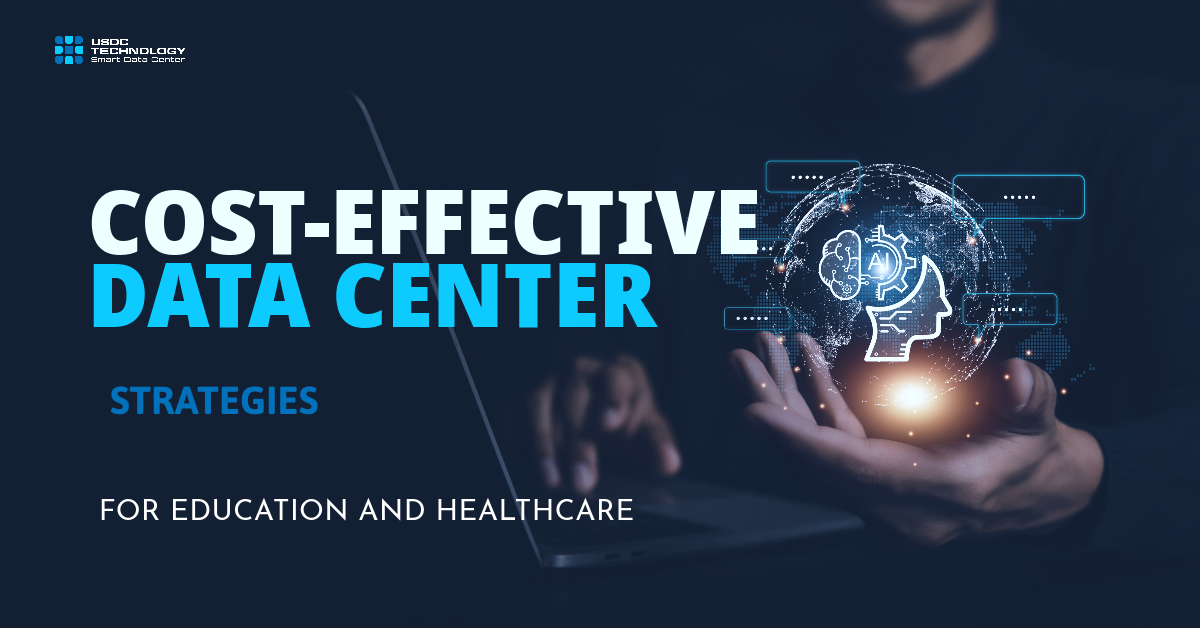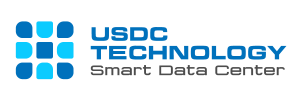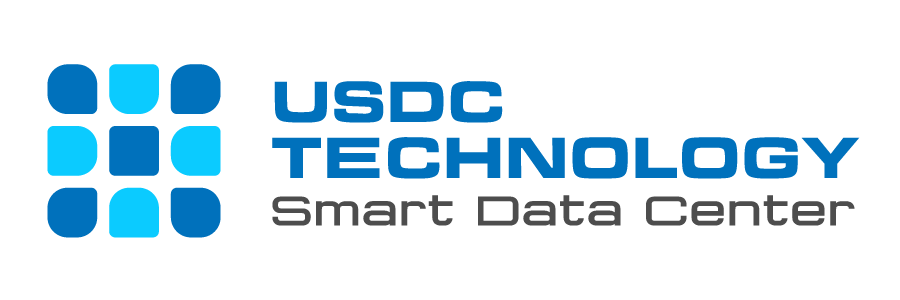

In the midst of the competitive business landscape, the ramifications of cost inefficiencies extend well beyond mere financial implications. They reverberate throughout the very core of an organization’s ethos and aspirations.
Indeed, in the realm of education, the ability to offer cutting-edge online learning platforms or establish state-of-the-art research facilities hinges directly on the efficacy of cost management practices. Similarly, for healthcare providers, the capacity to invest in cutting-edge medical technologies or expand patient outreach initiatives relies intimately on astute fiscal management.
An inability to optimize costs could inevitably result in a diminished ability to attract top-tier talent, deliver exceptional services, and retain a loyal customer base.
This article aims to give you a clear view of the most efficient and affordable types of data centers that can strengthen your operations. By looking into these choices and carefully reviewing how your data center currently works, you can smartly adjust your business to become even more competitive.
Table of Content
- I. The Importance of Informed Decision-Making on Data Center type
- II. Benefits of Smart Data Center Strategies with cost analysis
- III.Summing Up the Goodies: Budget-Wise Data Centers in Education and Healthcare
I. The Importance of Informed Decision-Making on Data Center type

In the annals of both the education and healthcare sectors, there exist cautionary tales that illuminate the pitfalls of ill-informed data center decisions
Take the case of The University of Arizona Health Network’s (UAHN): UAHN invested heavily in constructing an on-premises data center for patient records, driven by the desire for data control. The organization believed that maintaining complete control over patient data was paramount, and this led them to invest heavily in constructing and staffing the data center. However, higher-than-expected costs and lack of adaptability resulted in limited benefits with significant financial and operational challenges. While exact figures for the financial losses incurred by UAHN are not readily available, it’s clear that the investment in the on-premises data center did not yield the intended benefits.
Another case of The Los Angeles Unified School District’s (LAUSD) ill-fated technology project came with substantial financial repercussions. The project aimed to provide iPads to around 650,000 students and equip them with a cloud-based curriculum. However, the project faced multiple setbacks, including technical glitches, inadequate teacher training, and concerns about the alignment of the curriculum with the digital tools.
Despite spending around $1.3 billion, the project was suspended, leading to both financial loss, missed educational opportunities, was being unable to achieve its intended goals, and the substantial investment yielded little tangible educational benefit.
In both cases, the failures highlight the critical importance of thorough analysis and cost evaluation before embarking on significant ventures. The University of Arizona Health Network‘s decision to construct its data center underscored the need for a comprehensive understanding of long-term expenses and adaptability to evolving demands. Similarly, the LA Unified School District‘s technology project serves as a reminder that a meticulous assessment of projected costs and potential obstacles is essential to avoid substantial financial losses and missed opportunities. These instances emphasize that a well-informed and detailed examination of costs is fundamental in steering projects towards success and minimizing the risk of avoidable setbacks.
With that end, the below sections are all you can take away from this article and win your business opportunity, keep reading
II. Benefits of Smart Data Center Strategies with cost analysis
A. Cloud Data Centers: The Agile Enabler for Education and Healthcare

What Benefits: Cloud data centers emerge as dynamic solutions tailored to the ever-evolving needs of both education and healthcare. Their scalability offers a substantial advantage, allowing institutions to seamlessly adjust their resources according to demand fluctuations. For educational institutions, cloud data centers enable the swift deployment of online learning platforms and resource-intensive applications, providing an engaging and accessible learning environment. In healthcare, these centers facilitate the secure storage and rapid retrieval of patient records, enhancing clinical decision-making and telehealth capabilities.
Efficiency and Costs Comparison: Cloud data centers shine in terms of operational efficiency due to their ability to swiftly scale resources up or down as needed. This adaptability ensures that institutions only pay for the resources they consume, eliminating unnecessary expenditures during periods of low demand. However, while cloud data centers offer unparalleled flexibility, their ongoing operational costs can accumulate over time. See how USDC Tech carefully plan ahead estimated costs to make the most of it for our customers after just several meetings. Organizations need to carefully monitor resource consumption to prevent cost escalation.
How can: By eliminating the need for physical hardware upkeep and offering scalable resources on demand, these centers present a fiscally prudent option. A study conducted by the International Data Corporation (IDC) revealed that cloud data center users achieved 53% lower costs and 2.5 times more efficient IT operations compared to traditional counterparts (1). Suppose the university spends an average of $10,000 per month on cloud resources during peak periods and scales down to $2,000 per month during regular months. Over the course of a year, this totals $82,000 ($10,000 x 4 + $2,000 x 8).
B. Edge Data Centers: The Proximity Advantage for Education and Healthcare

What Benefits: Edge data centers align seamlessly with the needs of education and healthcare, emphasizing low-latency communication and proximity to end-users. In the education sector, these centers enhance the speed and quality of online learning experiences, ensuring that students can access resources without disruptions. For healthcare, edge data centers facilitate real-time data analysis and remote patient monitoring, vital components of modern telehealth initiatives.
Efficiency and Costs Comparison: Edge data centers excel in reducing latency and bolstering real-time interactions. Their proximity to end-users eliminates the delays that could impede effective learning or patient care. Additionally, the reduced need for data transmission over long distances contributes to cost savings. However, it’s important to note that edge data centers might necessitate higher upfront investments due to the need for multiple distributed locations. Over time, the lower data transfer costs can offset these initial expenses.
How can: In healthcare, edge data centers have gained traction for their potential to reduce latency and enhance remote patient care. According to Gartner, by 2025, 75% of enterprise-generated data will be processed outside the traditional data center or cloud, a testament to the growing prominence of edge data centers (2). Consider a hospital spending $300,000 to establish an edge data center, allowing for real-time patient monitoring and diagnostics. Over time, the immediate access to patient data can lead to faster interventions and improved outcomes, potentially justifying the initial investment through enhanced patient care and efficiency gains.
Another market research by Frost & Sullivan, the healthcare edge computing market is expected to reach $8.96 billion by 2025. The initial investment of $600,000 fosters immediate access to patient information, reducing critical decision-making times and improving patient outcomes (3)
This shift can result in notable cost savings by minimizing data transmission costs and boosting real-time access
C. Hybrid Data Centers: Synergy of Control and Scalability

Benefits: Hybrid data centers combine the advantages of both cloud and on-premises solutions, allowing institutions to strike a balance between control and scalability. This model is particularly beneficial for institutions with unique data security requirements or compliance mandates, such as healthcare facilities that must adhere to strict patient privacy regulations.
Efficiency and Costs Comparison: Hybrid data centers offer the best of both worlds, enabling organizations to optimize resources while maintaining control over sensitive data. They provide the flexibility to choose where to store critical information based on specific security needs. However, managing a hybrid environment requires a nuanced approach to ensure seamless integration between cloud and on-premises components, which could lead to additional management costs.
How can: Hybrid data centers offer a balanced approach that accommodates stringent security requirements while capitalizing on cloud scalability. Sensitive student data can reside within on-premises data centers, ensuring data compliance and control.
For scalability, institutions can integrate cloud services for virtual classrooms, collaborative platforms, and resource-intensive simulations.
Hybrid data centers shine in healthcare, where privacy regulations and sensitive patient information dictate data management. On-premises data centers house electronic health records, ensuring data sovereignty and compliance with regulations like GDPR and HIPAA. At the same time, cloud resources facilitate data analysis, research, and telehealth services.
Empirical findings demonstrate the effectiveness of hybrid data centers for educational institutions. A school district investing $400,000 in an on-premises data center for sensitive student data while allocating $90,000 annually for cloud resources fosters a balanced approach. Research by IDC indicates that hybrid cloud adoption is expected to grow at a rate of 27.6% over the next five years (4). The hybrid model ensures regulatory compliance, data security, and scalability, translating into operational resilience and prudent resource allocation.
III. Summing Up the Goodies: Budget-Wise Data Centers in Education and Healthcare

In our journey through data center choices for education and healthcare, we’ve unveiled the power of aligning technology with industry needs. Cloud, edge, and hybrid data centers offer tailored solutions, enhancing efficiency and controlling costs. The choice isn’t just about technical prowess; it’s about fostering financial prudence that amplifies operational excellence.
As businesses in these sectors forge ahead, remember that expert guidance is available. A specialized assessment can tailor data center plans to your unique needs. Whether it’s the scalability of the cloud, low-latency access through edge solutions, or the balance of hybrid models, optimization awaits those who are ready to embrace technology’s full potential.
By engaging with experts and aligning data center choices with operational strategies, education and healthcare businesses can achieve a new level of efficiency and financial wisdom, ensuring a future that’s both impactful and sustainable.
Sources:
(1) IDC’s Cloud Pulse Q2 2021, Worldwide
(2) Gartner, Top 10 Strategic Technology Trends
(3) Frost and Sullivian, Proliferation of Edge Computing
(4) Widespread Adoption of Cloud Computing


